So finally I come to the fourth and final part of the 'Wildlife at St Davids' series. We'd arrived in Wales on the Tuesday, and at St Davids on Wednesday lunchtime in pouring rain. The aim from the start had been to take a boat out to Ramsey Island, but the heavy rains were followed by high winds, which put all sailing on hold. We were due to leave on the Sunday and by Friday I was getting nervous. So it was with some anxiety on Saturday morning that I went to see if the seas were deemed calm enough to go out. They were; just.
The boat set off at around 9.00, and it soon became clear that 'calm enough' was a fairly loosely defined term, particularly around the more exposed, western side, of Ramsey Island. It was certainly safe enough, but it wasn't long before everything in the boat was thoroughly soaked. I did my best to keep the camera dry. It was a losing battle, but ultimately a worthwhile one.
The seal colony at Ramsey Island is the largest in southern Britain, and can number up to about a thousand adults, with around 500 pups born annually. September is pupping season, so a good time to visit (assuming the weather cooperates). It only takes a few minutes to get out to the island. The majority of the seals are on the eastern side, which is littered with small coves and pebble beaches.
These seals are mainly juvenile males. They congregate in large numbers, and the bolder among them swam out to investigate the boat.
The trip takes in several bays around the island.
The females and pups weren't in evidence on the more crowded beaches, but we did get to see them in the numerous more secluded coves.
We made it back to land safely, apart from the camera. As I got off the boat I flicked the switches to look at what I'd got and the camera promptly died on me. It had survived the elements for precisely the length of the trip. The general soaking had obviously finally got to the electronics. That's a lesson that proper weather-sealing is vital. Now I did happen to have a spare camera with me. I'd debated on taking a second body on the trip, but had ended up with my old Canon S2 (which does video as well). It took all of five minutes to decide to buy a larger data card and book a second trip out.
The calmer seas in the afternoon allowed us to get closer in to some of the bays. These next two shots were taken with the S2 and are among my favourites.
Mainly though I used the video function. The second trip avoided going to the rougher seas to the west of the island. It also brought me my first sighting of gannets and a harbour porpoise. 🙂 Both can be seen (briefly) in the early part of this video.
We of course saw numerous other seabirds on both trips, including these delightful shags.
All told, a wonderful break with some great sightings. We'll certainly be heading back there at some point (with waterproofed gear!). There are several companies offering boat trips. We ended up with Voyages of Discovery (who were fantastic) but also check out Thousand Islands. And for somewhere to stay, we can very highly recommend The Old Cross Hotel.
The full set of Ramsey Island photos is on my website.
Camera note: unless otherwise indicated all shots taken with the EF 100-400mm f/4.5-5.6L USM IS lens.
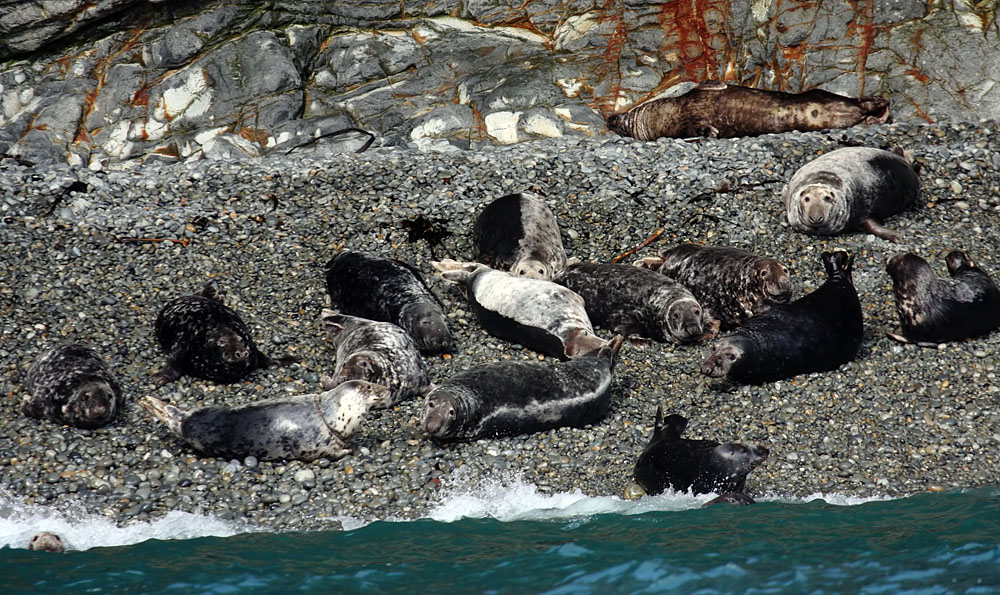
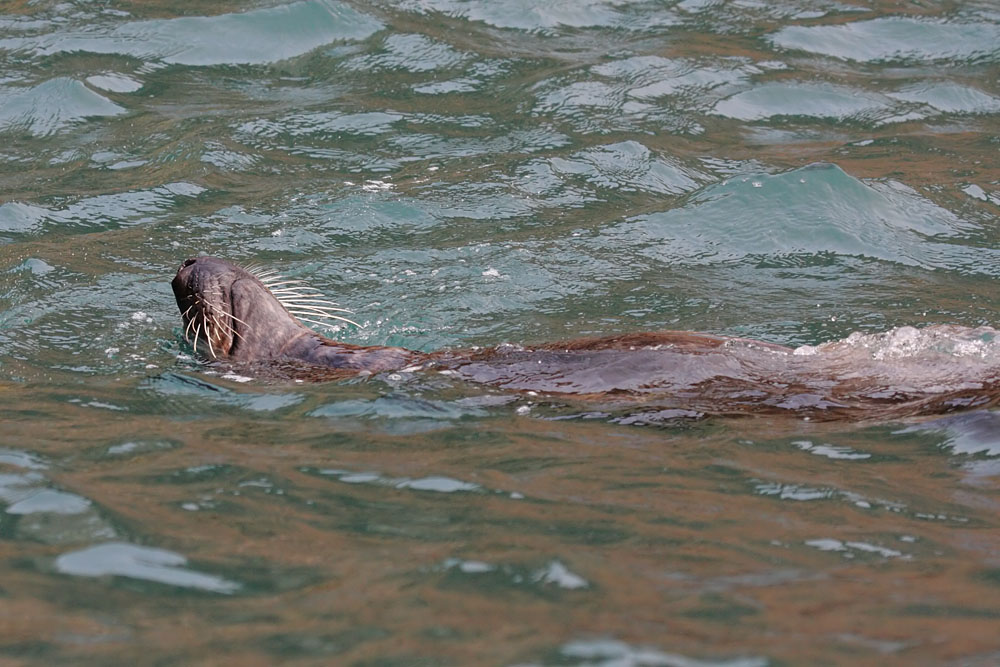
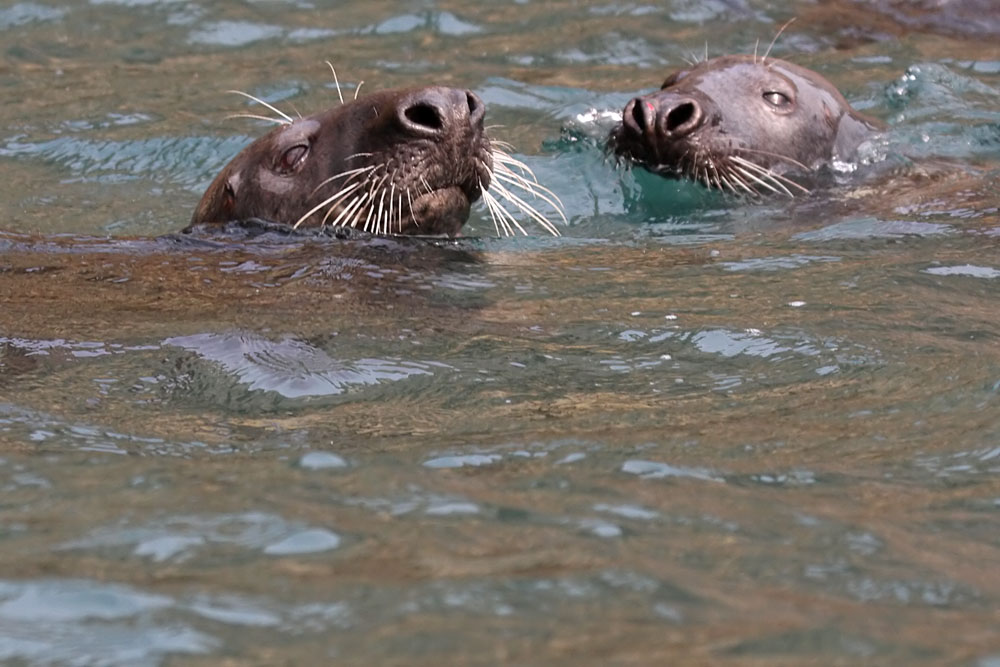

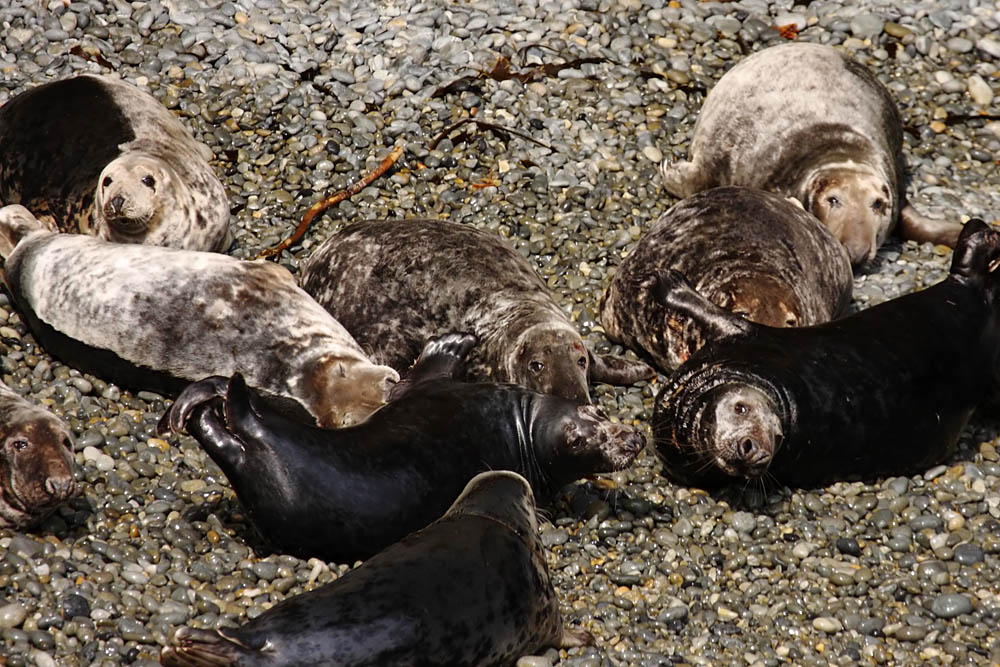
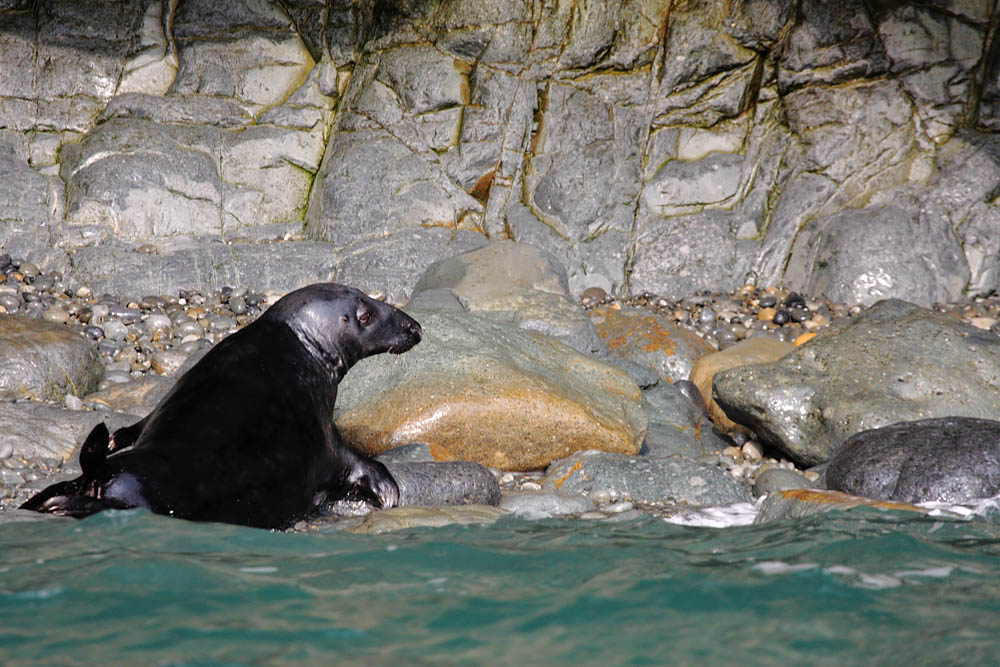
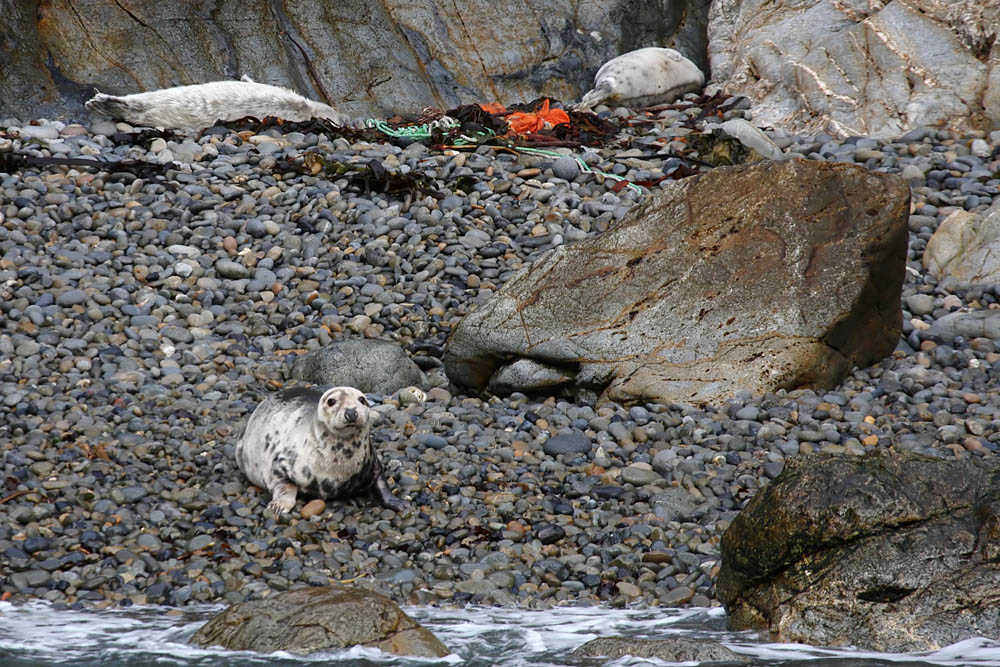
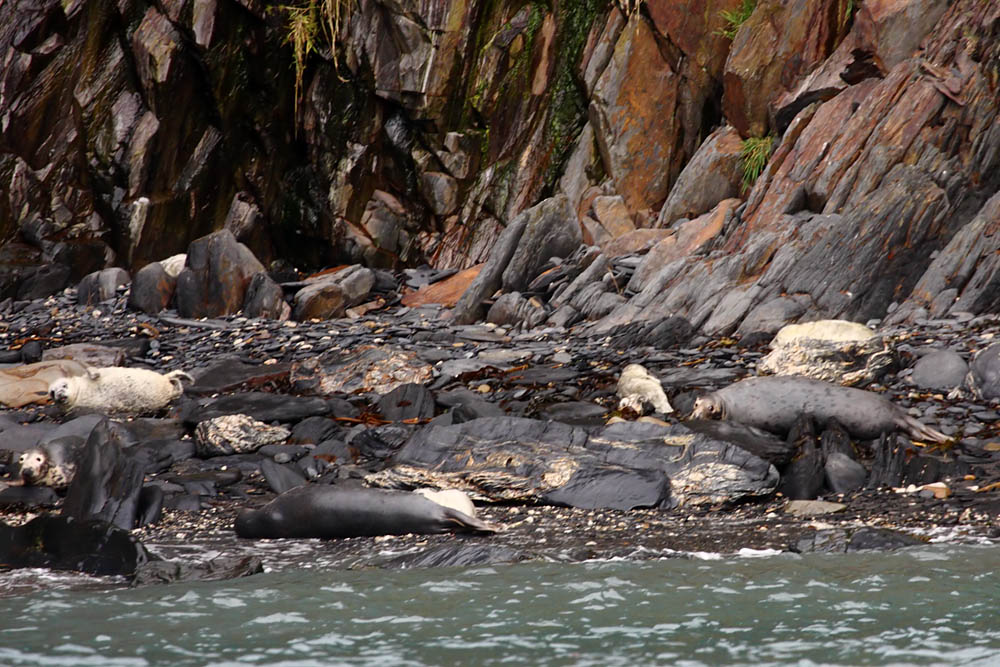
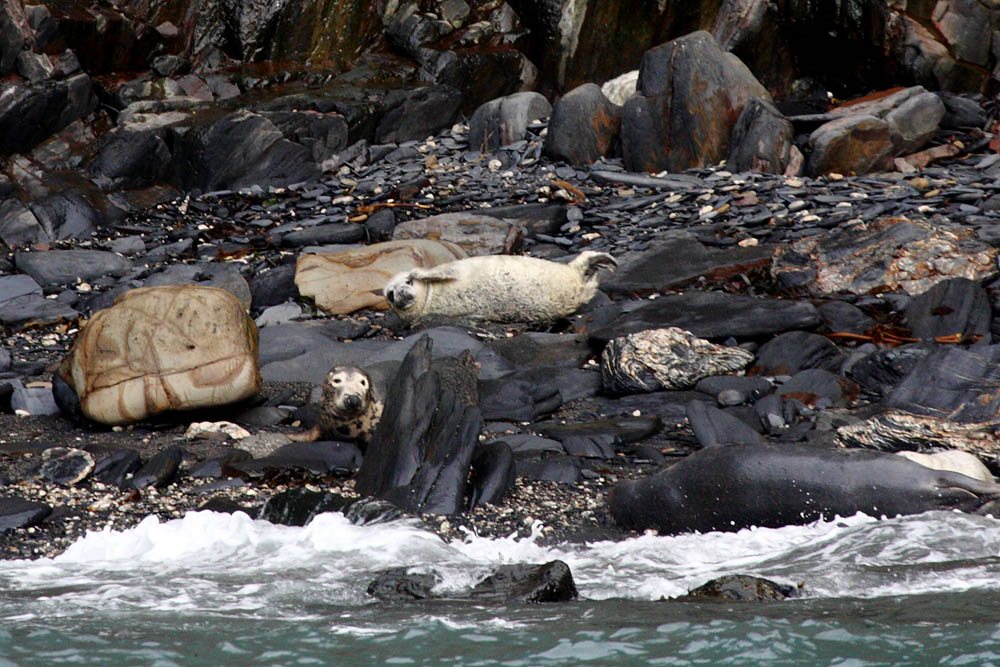

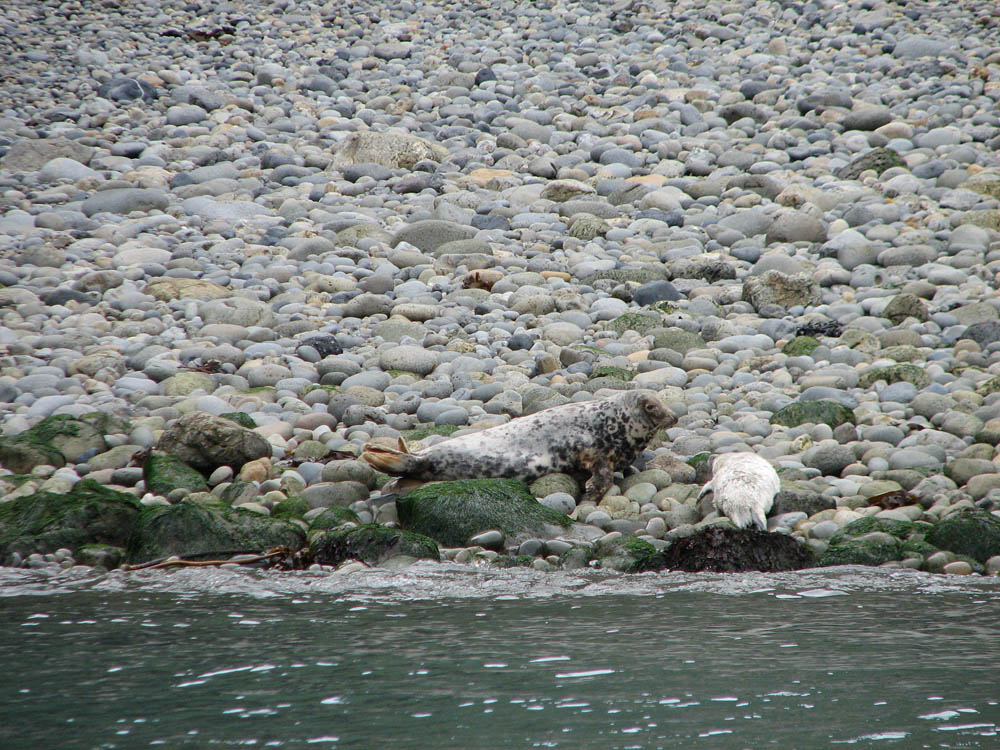
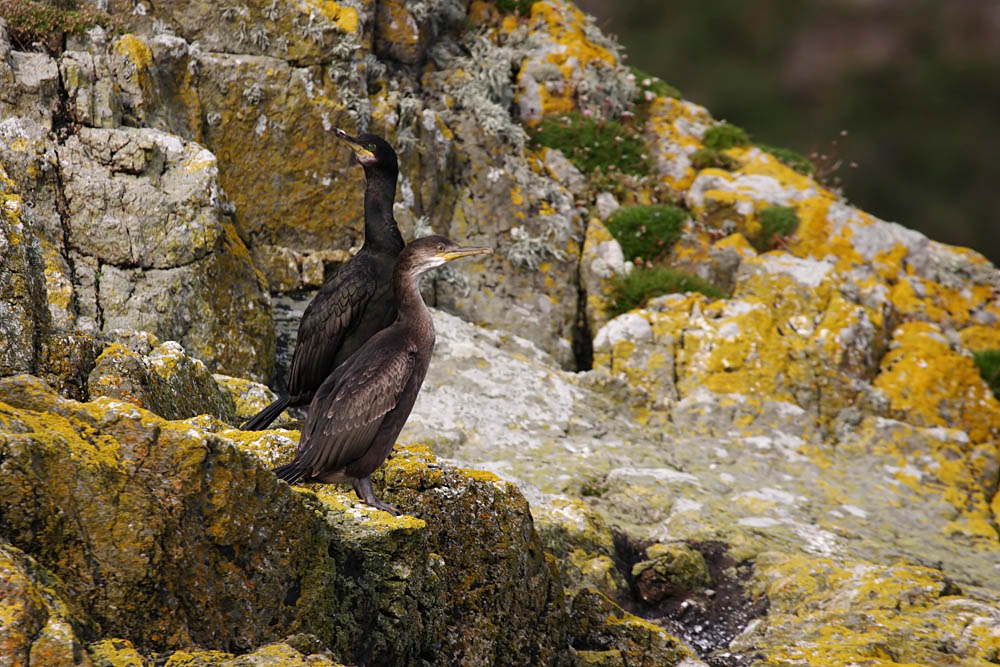
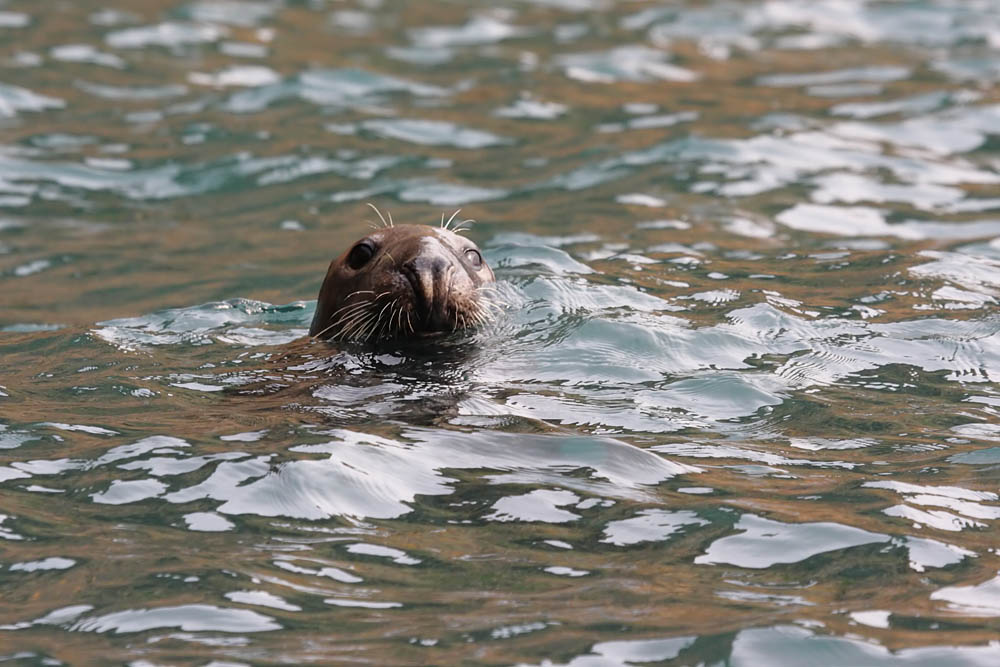
gdare
13 Sep 2009I really enjoyed both photos and video. Waves were really big but I guess it s nothing for a seawolf like you 😀
You`ve said there are about 500 pups in a colony of seals and not all survive. What is the main reason for that?
RobinL
13 Sep 2009Great post. Exciting to see all those seals.
SittingFox
13 Sep 2009Excellent! They have fantastic whiskers 😀
Nice to see the other wildlife too. Porpoises are a nightmare to film – well done!
Words
13 Sep 2009Robin, thanks. They're such strange creatures, almost immobile on dry land but so swift and agile in the water. 🙂
Words
13 Sep 2009Darko, I don't have any problems with rocky seas, which is something to be thankful for! They talked about he survival rates of the pups. There are numerous risks for them, including predators (sea birds) and hypothermia (they get cold) and extreme weather. I think this is fairly normal with most wild animals: a proportion of the young won't survive to adulthood. At least we don't have hunting.
Words
13 Sep 2009Adele, yes they were great. I wasn't quite sure what to expect, and the weather wasn't ideal but a really enjoyable trip. That was the first porpoise I've seen. Trying to follow it through the camera was nearly impossible, but I'm glad I managed a 'proof of sighting'.
Ukwildlife
13 Sep 2009Great photos and video. Sorry to hear about your camera, I was so paranoid I kept mine in the bag on the way to skomer and had the bridge camera out. Mind you there was barely room for the people, let lone a big camera!
Have you been to the Donna Nook seal colony? I thinking of heading there this year
Words
13 Sep 2009Neil, I thought about your trip to Skomer while we were down there. It's somewhere where I'd like to go next spring/early summer, especially if there is such a thing as a 'quiet time'. The puffins must be fabulous.
I knew it was a mistake to take the camera once the boat had started moving. It wouldn't have taken much to protect it. A large plastic bag over the top for the speed-boat bits of the trip would have done the job nicely. So my own fault. The S2 was great though for videoing… much easier than trying to focus via a camcorder pull-out screen.
I've not been to Dona Nook, but from what I've read it must be a good spot (and they will be pupping later than in Wales). I'm sure you'll enjoy it (weather permitting).
Flying Red Fox Blog
17 Sep 2009Really lovelly photos and video :yes:.. did you get sworn at by a certain chef on Ramsey Island? 😉 😆
Words
17 Sep 2009Mark, LOL at a certain chef :chef: